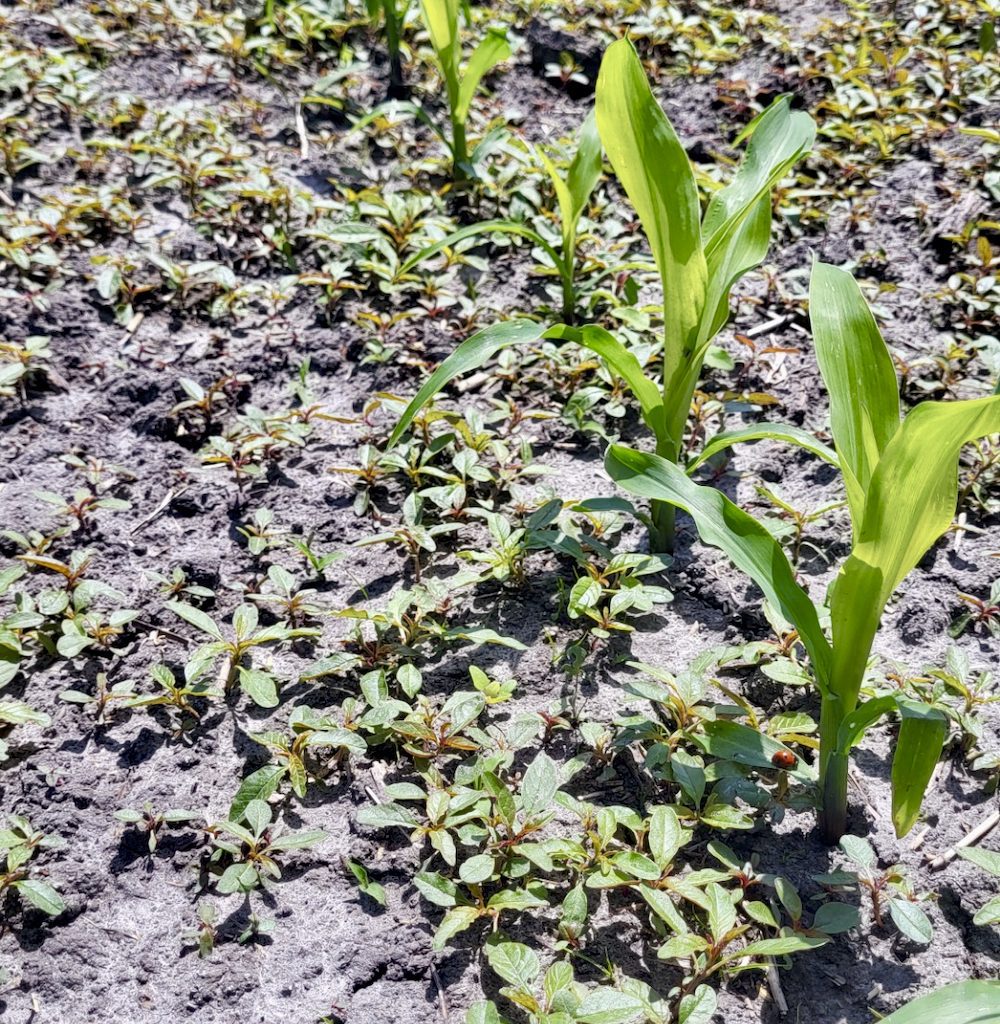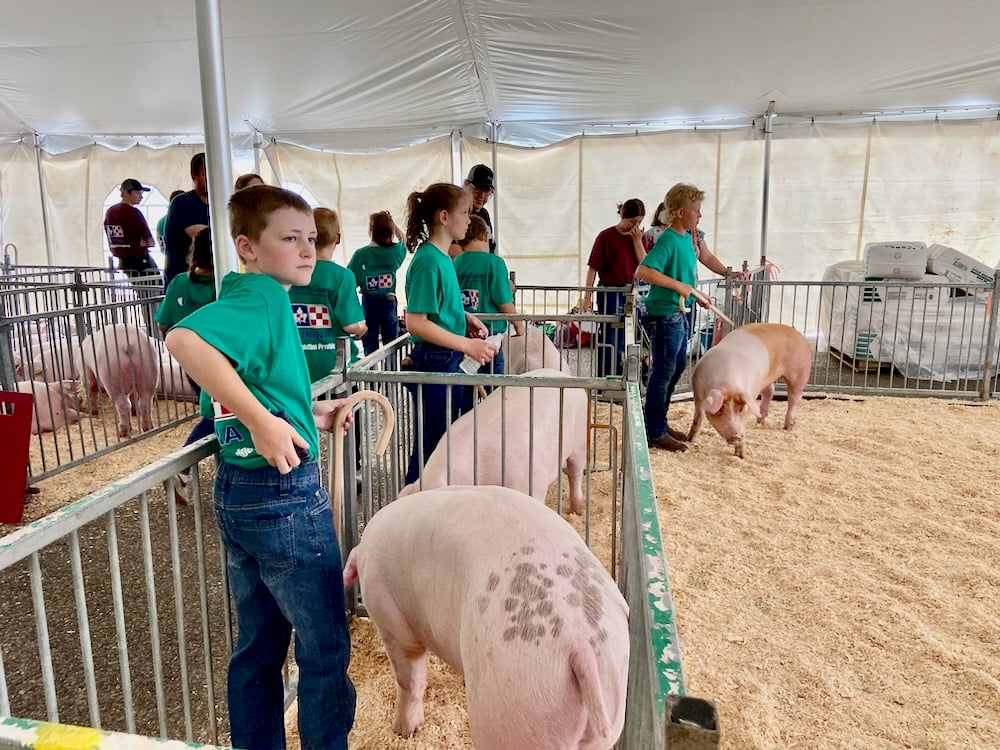Crop Report: The good, the bad and the difficult

Crop growth and conditions continue to be variable across the province. While crops look good in areas that were able to be planted either early or as per normal and into decent soil conditions, other areas have been delayed significantly by continued rainfall. Understandably, this has been a difficult time for those growers. There is optimism that most of the unseeded acreage will be planted this week with above normal air temperatures to speed up the drying of soil.
Read Also


Ontario Pork Congress: Disease updates, Quebec processing ramifications and the return of the pigs
The 51st Ontario Pork Congress, and the second since a two-year COVID break, returned to Stratford, Ont. June 19 and…
Corn
Crop growth and conditions continue to be variable across the province. While the earliest planted corn is approaching canopy closure, there is significant acreage that was planted this week. Side-dressing of nitrogen is being done to corn planted on the earlier side. Soil applied herbicide programs have largely worked well but may be coming to the end of their residual effectiveness, and there may be a new flush of seedling weeds. Timely control of these new flushes is important, especially with difficult to control species like waterhemp (see at top).
Soybeans
Planting has continued this week in areas where soil conditions have prevented earlier planting. Re-planting has also occurred where soil crusting has prevented good emergence. Seedcorn maggot and slug feeding are also prevalent this year. Soybeans have an impressive ability to compensate for thin stands under good growing conditions. Soybean plants can fill spaces up to 30 cm (12 inches) within or between rows with relatively little yield reduction. Research has shown that a final stand of 90 000 plants per acre in 7.5 inch rows provide a yield potential of 90 per cent. Field experience has shown that more plants per acre are needed on clay soils. A minimum stand of about 110 000 plants/acre on heavy clay soils is required to achieve good yields. When thickening a poor stand, use the same variety. Soybeans that were planted during the first part of May are approaching canopy closure and are beyond the 3rd to 4th trifoliate stage of growth.
Dry beans
Most of the dry bean acreage has been planted. Emergence has been variable, and poorer than normal due to soil crusting in some areas.
Cereals
The broad use of T3 fungicides across the province has appeared to slow the stripe rust threat. Fusarium head blight is visible in some fields but for the most part remains at low levels. Growers are encouraged to continue scouting their fields leading up to harvest for signs of Fusarium Head Blight (FHB) infection. With previous rainfall events and storms late this week, some fields have lodged, but still remains minor. Again, doing field preharvest evaluations for FHB, lodging, etc is important to prioritize harvesting order.
Winter wheat continues to be further advanced than normal with harvest expected to start within the next 10 days in the southwest. Despite the recent warm temperatures, yield potential looks excellent. Winter barley has also matured more quickly than normal, and harvest has begun in the southwest. Lodging has been observed in areas affected by the mid-week storm front.
Spring cereals are also looking good with many fields just reaching the heading stages.
Winter canola
Harvest is imminent with desiccation just beginning in parts of southern Ontario. This may offer an opportunity to double crop soybeans in those areas.
Weed control
Big weeds continue to be the story of the 2024 season. With a mild winter, many winter annual and perennial weeds were more advanced than normal at the beginning of the spring. An advanced growth stage to start the spring, coupled with weather conditions that prevented prompt spraying, has resulted in poor control. All that one can do to minimize the impact of such big weeds is to apply the highest labelled rate of the selected herbicide, ensure good coverage of the weed by increasing water carrier volumes (especially with contact herbicides) and if possible, avoid early morning or late evening applications when ambient air temperatures and the leaf orientation of the weeds are less conducive to herbicide uptake. Moving forward, weed management programs that combine tillage, cover crops (cereal rye), residual herbicides and fall weed management, often have fewer of large winter annual and perennial weeds.
Herbicides that have the active ingredient “dicamba” cannot be applied when air temperatures exceed 30 degrees Celsius during application as it increases the risk of off-target drift by volatilization.
The risk of crop injury increases when herbicides are applied to IP (Identity Preserved), non-GMO soybeans or dry beans during “hot” conditions (above 30 C) that have occurred over the past week. The decision to wait for less stressful conditions for applying herbicides or to accept some increased risk of crop injury but target smaller, more susceptible weeds can be a difficult to make in the moment. In general, it is often better to prioritize weed control at the sacrifice of crop injury. It is best to consult the herbicide manufacturer for product specific guidance when such decisions must be made.
Agricorp
Upcoming deadlines:
- For Production Insurance coverage, crop planting deadline is June 30th for soybeans. The unseeded acreage coverage provides one-third of a farm’s average farm yield if a crop is not planted by the planting deadline.
- The deadline for reporting actual acres of spring-seeded grains and oilseeds or new forages is June 30th. Growers are encouraged to report acres as soon as possible to avoid busy times at the deadline. Reporting can be done online or by calling the Guelph office (+1 888-247-4999).
– To read the full Ontario Crop Report for June 20, visit the Field Crop News website.
Source: Farmtario.com

